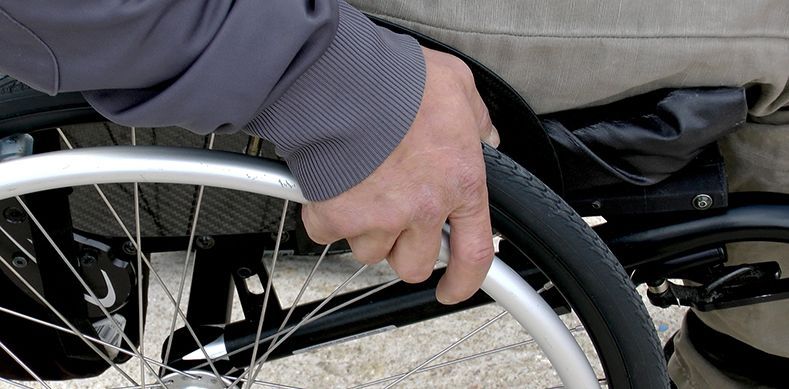How to Make Your Property Safe and Accessible
Learn how to accommodate disabled tenants with these 15 tips for making a rental property accessible, safe and compliant with residential disability law.

As a property manager, it is fundamental to understand one’s responsibilities as mandated by the law. Laws pertaining to disability and accessibility exist to protect disabled individuals from experiencing discrimination as prospective tenants with particular needs that have to do with being able to live in a safe, adequate space. The basics of residential disability law lay out what constitutes discriminatory and/or negligent landlord practices, which are unlawful and can be legally prosecuted.

While this article is meant to be a helpful resource, it is not designed to be an exhaustive legal manual. Researching and studying actual accessibility law should be made a priority to best prepare oneself to understand and approach disability adequately and as required by the law.
To begin, the federal Fair Housing Act and the Fair Housing Amendments Act make it unlawful to reject a prospective tenant because of their disability. In fact, the Fair Housing Act also prohibits asking a prospective tenants about whether they are disabled and about the nature of their disability, visible or not. While such questions are unlawful, the law allows for clarifying whether a prospective tenant qualifies for demanding a rental unit designed for disabled tenants only, or for a unit designed to accommodate certain disabilities in particular.
Accommodations are a core element to accessibility law, being the factor that determines whether a person is indeed able to secure his or her right to live safely. The law states that disabled tenants may request reasonable accommodations to be provided, added or allowed for them to actually utilize and access their living space and common areas within the property. The nature of the accommodation requested should exhibit a reasonable relationship to the disability. Such reasonable requests include allowing a service animal to live on the property or a designated parking space. To handle requests properly, it is fundamental to have an open discussion with a tenant regarding their needs.
Deciding what represents a “reasonable” request can be challenging considering that it can vary from case to case and property to property: the US Department of Housing Development requires a “interactive process" for reaching a reasonable compromise between a tenant and property manager/landlord/owner, generally justifying the rejection of demands for certain accommodations only when they represent an “undue” financial burden.

Accessibility Through Property Modifications
Requesting or making changes to a property fall into the category of “reasonable” requests that may or may not be granted. Before any modifications can be made, they must be approved by a property manager/landlord/owner in charge, who can request the tenant to provide information regarding how proposed changes are necessary and/or ideal for their wellbeing.
It is important to keep in mind that state laws can also apply to residential requirements, and should be considered when handling a request for building modifications.
Why You Should Invest In Accessible Modifications
Generally, unless a property is considered to be federally assisted housing, disabled tenants are expected to arrange and pay for necessary modifications to the property. This being said, the following 15 tips have been provided to make residential units safe and accessible for prospective tenants who are disabled or who have particular needs pertaining to mobility and access.
Implementing those changes can be significantly beneficial, as it can make a rental property particularly appealing for tenants who value living in an accessible and safe space. Considering that disability law is more lax and challenging to apply uniformly for residential spaces, disabled tenants will likely also value their ability to find a welcoming space that they can trust to accommodate their needs, often becoming long-term tenants. Finally, addressing accessibility improvements to a property in a proactive manner makes it possible to avoid finding oneself unprepared when a prospective tenants might request them down the road, instead allowing a property to acquire added value and appeal for its safe and accessible design.

- Repair or remove carpet flooring that has become loose, broken tiling and/or any kind of uneven, damaged pavement.
- Pave all walkways and driveways to render them regular and obstacle-free.
- Enlarge all doorways on both interior and exteriors to at least 36 in. wide
- Consider installing automatic systems allowing remote opening of doorways, garages and gates
- Install ramps on all multileveled access points; our experts encourage having a qualified urban planning professional inspect the property and recommend adequate placement of ramps
- Replace door knobs with accessible flat handles
- Install non-slip flooring in bathrooms, kitchens, exterior walkways and any other surface that is likely to become slippery when wet
- Install grab bars in the bathroom, ensuring that they are placed at the correct height and that can support the weight of an average adult
- Consider installing particular accessible fixtures - such as toilets and showers - or begin by lowering toilets and lavatories.
- Accessible faucets are ideally switched on by motion sensors
- Light switches should be lowered to be accessible for wheelchair users, or substituted for a motion-sensing lighting system
- Mailboxes should be lowered or substituted for accessible models
- If the unit is furnished, furniture arrangements should allow enough clearance for users of assistive devices to travel around comfortably.
- Consider implementing Smart technology home system; Smart tech automates several in-home, everyday tasks, which renders them accessible. Additionally, Smart tech is generally a worthy investment as it is a unique and practical asset for most tenants - regardless of ability.
- Upgrade to a side-by-side refrigerator: especially if your property is due for replacing outdated appliances - which is a beneficial investment considering that most newer appliance models feature energy-saving features - side-to-side refrigerators are ideal as they allow easy access to both refrigerating and freezing compartments.

